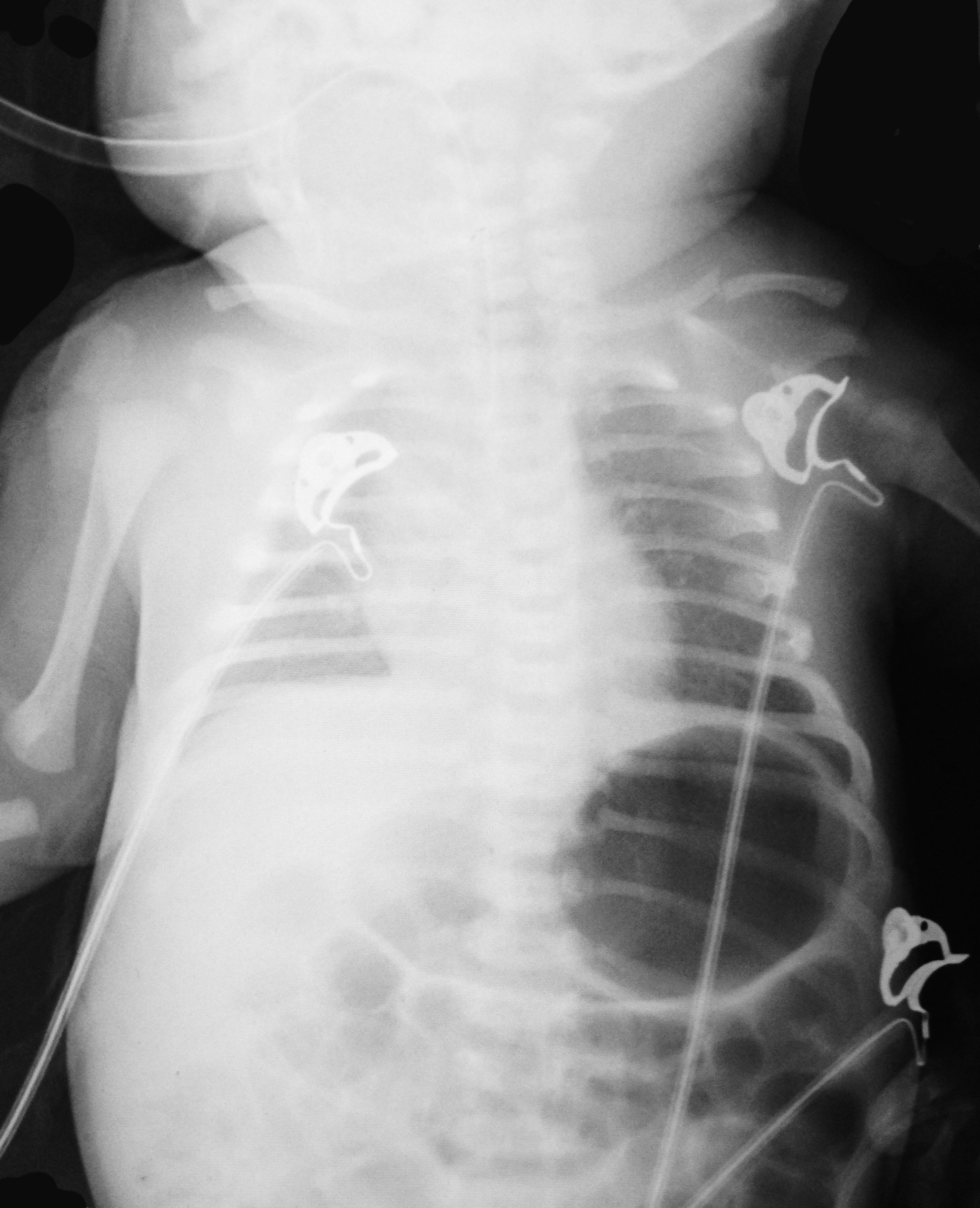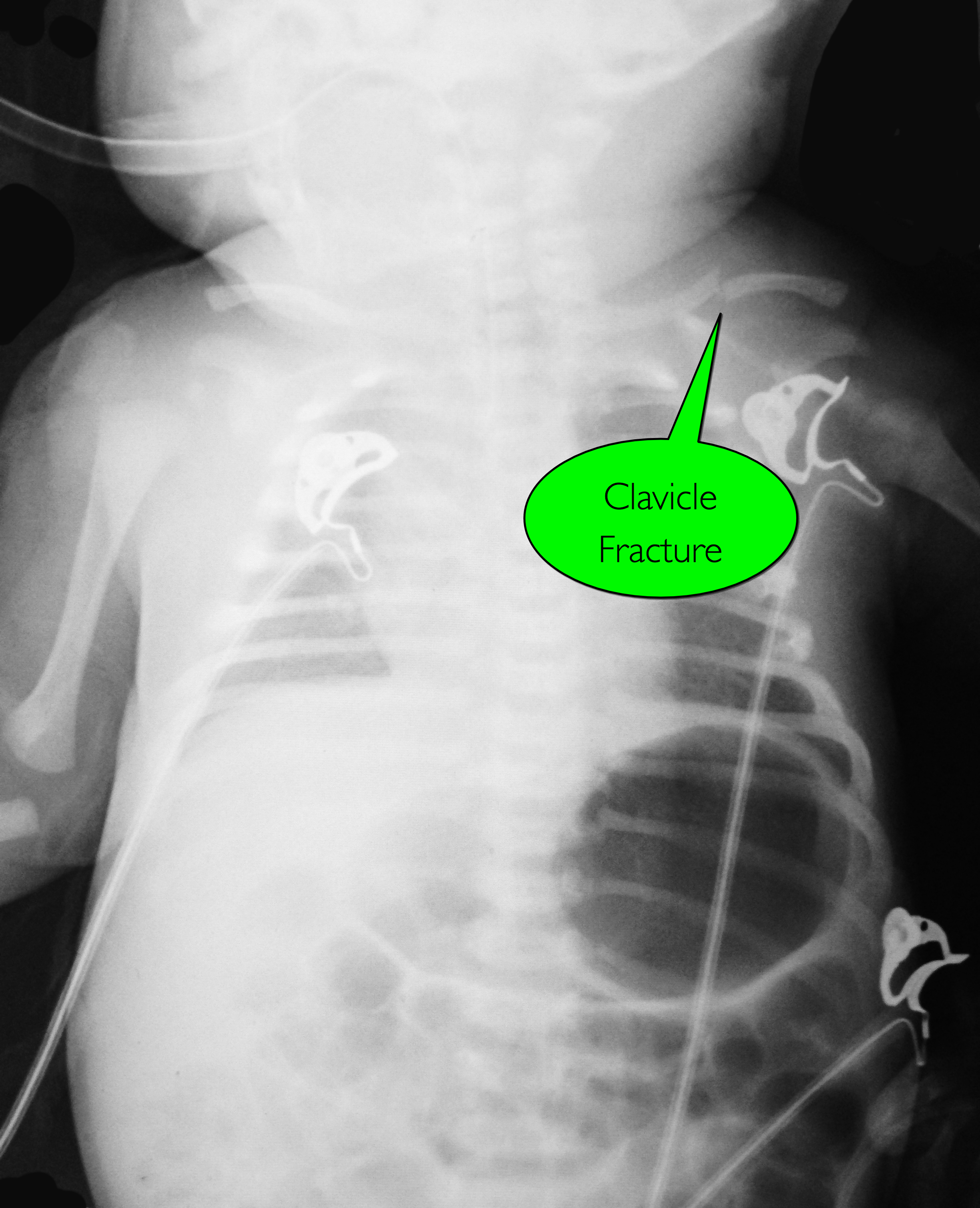Category: Visual Diagnosis
Posted: 10/6/2014 by Haney Mallemat, MD
Click here to contact Haney Mallemat, MD
7d old child presents with difficulty feeding,vomiting one time, and now with intermittent apneic episodes. What's the diagnosis? (Careful....this one is tricky!)

Answer: Workup should include an ALTE and sepsis evaluation PLUS evaluation for non-accidental trauma
Non-accidental trauma (NAT)
NAT is most prevalent in children 0-3 months of age.
Classic metaphyseal lesions, rib fractures, and fractures in various stages of healing are most commonly described in children.
How do we know this is not just birth trauma from a shoulder dystocia, large for gestational age, or difficult vaginal delivery?
Subperiosteal new bone formation appears as a:
NAT Work-up:

Follow me on Twitter (@criticalcarenow) or Google+ (+criticalcarenow)
